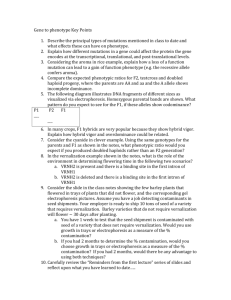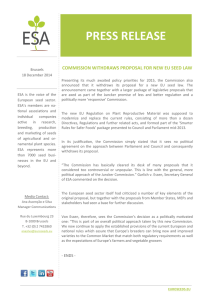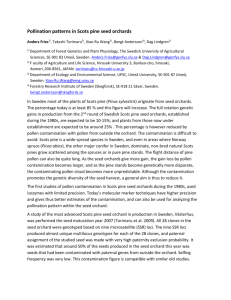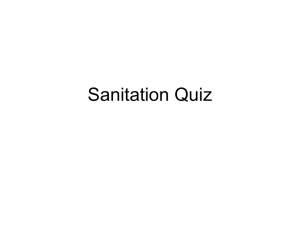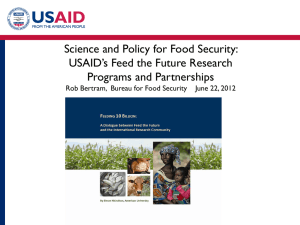Contamination of Commercial Grain Deliveries with Treated Seed
advertisement
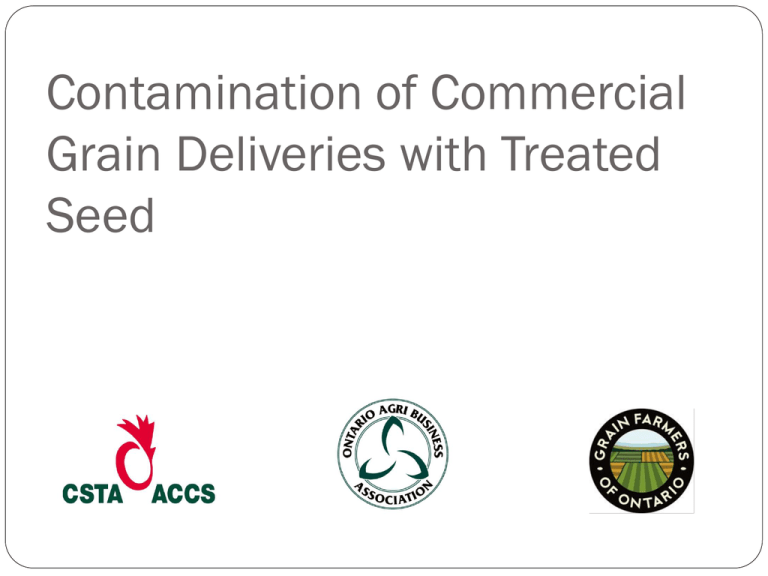
Contamination of Commercial Grain Deliveries with Treated Seed What is the Issue? Elevators have zero tolerance for contamination of grain deliveries with treated seed Processor requirements Could impact trade opportunities What is the Risk? Farmer risks liability Rejection of load Potentially own bin of contaminated grain Cost of cleanout Business disruption Elevators have similar risks with processors and export customers. Why is it Happening? Producers using same equipment to handle bulk seed and harvested grain Not using appropriate cleanout procedures on this equipment Only takes a small amount to cause problems Treated Seed Checklist Identifies key ‘control points’ where contamination might occur Provides Standard Protocols and Enhanced Protocols for managing equipment to help avoid contamination 1. Equipment Selection Standard Select equipment that can be easily cleaned Keep equipment in good repair Enhanced Use dedicated equipment for handling bulk seed 2. Bulk Seed Loading Standard Label equipment used for handling bulk seed Enhanced Attach a tag to equipment that is only removed once it has been properly cleaned 3. Cleanout – Wagons and Trucks Standard Sweep Compressed air Pressure wash Enhanced Develop written protocols specific to your operation Train all farm ‘staff’ 4. Cleanout Augers Standard Remove wagon mounted augers Auger should be flushed with minimum 50kg of approved material Enhanced Use dedicated auger for handling seed 5. Documentation Standard Keep accurate records of what equipment was used to handle seed Enhanced Cleanout should be documented, listing: Who cleaned the equipment When it was cleaned How it was cleaned 6. Third Party Conveyances Standard Producer as ‘shipper’ is responsible for ensuring that truck is free from contamination Enhanced Have drive fill out and sign document Conclusion Contamination of commercial grain with treated seed negatively impacts the entire grain industry Use of bulk seed requires additional management to avoid contamination Following the protocols outlined in the checklist will reduce the risk of contamination significantly
